How to Write a Sewing Blog
Sewing is a hobby that many people have a passion for. Sharing your work and connecting with other people who share the same craft has become even easier thanks to blogs and social media. To write your own sewing blog, create a blog on a...
Part 1 of 3:
Creating Your Blog
-
 How to Write a Sewing Blog Picture 1 Come up with a name for your blog. One of the most important parts of creating a blog is choosing a snappy, witty name. Try to pick one that encompasses what your blog is about while staying short and concise. Don't choose words that are too common, or else your readers might not be able to find your blog when they do a quick search. Spend some time brainstorming on what your sewing blog could be called.[1]
How to Write a Sewing Blog Picture 1 Come up with a name for your blog. One of the most important parts of creating a blog is choosing a snappy, witty name. Try to pick one that encompasses what your blog is about while staying short and concise. Don't choose words that are too common, or else your readers might not be able to find your blog when they do a quick search. Spend some time brainstorming on what your sewing blog could be called.[1]- Cotton and Curls, Easy Peasy Creative Ideas, Muse of the Morning, and My So-Called Crafty Life are all popular sewing blogs with creative names.
-
 How to Write a Sewing Blog Picture 2 Choose a platform to host your blog for the easiest option. There are many free websites that will host your blog, but they may not be as customizable. Decide if you'd like to spend some money on making your blog look the way that you'd like it to, or if you are fine with a slightly less customizable option.[2]
How to Write a Sewing Blog Picture 2 Choose a platform to host your blog for the easiest option. There are many free websites that will host your blog, but they may not be as customizable. Decide if you'd like to spend some money on making your blog look the way that you'd like it to, or if you are fine with a slightly less customizable option.[2]- Blogger.com, WordPress.com, and Tumblr.com are some free blogging sites that can help you get started with your blog.
- WordPress.org is one of the top blogging sites. It costs $5 per month as of December 2019.
-
 How to Write a Sewing Blog Picture 3 Make a website if you want your own domain name. If you don't want to host your blog on a third-party platform, you can also register a domain name and create a website with your blog name as the URL. Choose a hosting service like GoDaddy.com, SafetyNames.com, or eNom.com and check on the availability of your domain name. Sign up and pay the fees to set up your domain name and create your website using a template or your own code.[3]
How to Write a Sewing Blog Picture 3 Make a website if you want your own domain name. If you don't want to host your blog on a third-party platform, you can also register a domain name and create a website with your blog name as the URL. Choose a hosting service like GoDaddy.com, SafetyNames.com, or eNom.com and check on the availability of your domain name. Sign up and pay the fees to set up your domain name and create your website using a template or your own code.[3]- Most domain names cost between $10 and $20 per year to register.
- You will need to re-register your domain name every year to keep your URL.
-
 How to Write a Sewing Blog Picture 4 Design your blog on your own or hire someone to create it for you. Depending on what platform you host your blog on, you may be able to use a template for the design of your blog. Most websites that host blogs will walk you through setting up your blog and making it look pretty. If you are creating your own website or have specific ideas for your blog in mind, you can hire a graphic design artist to make your blog for you. Look up freelance artists in your area to find someone near you.[4]
How to Write a Sewing Blog Picture 4 Design your blog on your own or hire someone to create it for you. Depending on what platform you host your blog on, you may be able to use a template for the design of your blog. Most websites that host blogs will walk you through setting up your blog and making it look pretty. If you are creating your own website or have specific ideas for your blog in mind, you can hire a graphic design artist to make your blog for you. Look up freelance artists in your area to find someone near you.[4]- Graphic or web design artists are trained in making websites aesthetically pleasing and easy to use.
-
 How to Write a Sewing Blog Picture 5 Set up an AdSense account to make money from your blog. Even if making money off of your blog isn't your goal, it can be nice to generate some passive income on your blog posts. If you'd like to make some money off of your blog, set up an account with Google AdSense to get ads on your blog and make money each time someone clicks on one.[5]
How to Write a Sewing Blog Picture 5 Set up an AdSense account to make money from your blog. Even if making money off of your blog isn't your goal, it can be nice to generate some passive income on your blog posts. If you'd like to make some money off of your blog, set up an account with Google AdSense to get ads on your blog and make money each time someone clicks on one.[5]- To set up your AdSense account, visit https://www.google.com/adsense/start/.
- AdSense is free to sign up for.
-
 How to Write a Sewing Blog Picture 6 Create social media accounts with your blog name. It's always a good idea to spread your brand across multiple platforms. Set up a Twitter, Instagram, Pinterest, and Facebook page with your blog name as the handle to use them as promotion tools in the future.[6]
How to Write a Sewing Blog Picture 6 Create social media accounts with your blog name. It's always a good idea to spread your brand across multiple platforms. Set up a Twitter, Instagram, Pinterest, and Facebook page with your blog name as the handle to use them as promotion tools in the future.[6]Tip: If your blog name isn't available on these platforms, try adding spaces, underscores, or numbers to your handle.
Part 2 of 3:
Writing Blog Posts
-
 How to Write a Sewing Blog Picture 7 Write an introduction post to tell people who you are. It's a good idea to introduce yourself so that people who read your blog have some context about who you are and why you write this blog. Talk a little bit about what inspired you to sew, why you want to share your projects and creations, and what your readers can expect from you in the future.[7]
How to Write a Sewing Blog Picture 7 Write an introduction post to tell people who you are. It's a good idea to introduce yourself so that people who read your blog have some context about who you are and why you write this blog. Talk a little bit about what inspired you to sew, why you want to share your projects and creations, and what your readers can expect from you in the future.[7]- Include a photo of yourself if you'd like to personalize your blog even more.
- Be sure to link your social media platforms in this post as well.
-
 How to Write a Sewing Blog Picture 8 Publish blog posts about different sewing projects you have done. Most of your blog posts will probably center around individual projects. As you work on a project, take high-quality photos in good lighting that show the process of what you did. If your readers want to follow along, it will be much easier to follow photos than written words.[8]
How to Write a Sewing Blog Picture 8 Publish blog posts about different sewing projects you have done. Most of your blog posts will probably center around individual projects. As you work on a project, take high-quality photos in good lighting that show the process of what you did. If your readers want to follow along, it will be much easier to follow photos than written words.[8]- Consider investing in a high-quality digital camera and studio lighting if you plan on using your sewing blog for a long time.
- Keep your tone friendly and engaging in your posts so that they are fun to read.
- Remember to proofread and edit your blog posts before publishing them.
Tip: Natural light is the best light source. If you can, take your pictures near a window during the day.
-
 How to Write a Sewing Blog Picture 9 Create blog posts about tips and tricks of the trade. If you've been sewing for a long time, you've probably picked up some techniques that might be helpful to others. Along with posting about specific projects you've done, you can also make posts about easy ways to complete a certain stitch or how best to thread a needle.[9]
How to Write a Sewing Blog Picture 9 Create blog posts about tips and tricks of the trade. If you've been sewing for a long time, you've probably picked up some techniques that might be helpful to others. Along with posting about specific projects you've done, you can also make posts about easy ways to complete a certain stitch or how best to thread a needle.[9]- Mixing up what you post about will keep your readers more engaged.
-
 How to Write a Sewing Blog Picture 10 Read other sewing blogs for inspiration. If you feel stuck or you don't know what to write about, check out other sewing blogs that you can get ideas from. While you shouldn't copy anyone's posts directly, you can try your own take on their projects or try a project that didn't work out for them. Make sure to credit any posts that you reference in your blog.[10]
How to Write a Sewing Blog Picture 10 Read other sewing blogs for inspiration. If you feel stuck or you don't know what to write about, check out other sewing blogs that you can get ideas from. While you shouldn't copy anyone's posts directly, you can try your own take on their projects or try a project that didn't work out for them. Make sure to credit any posts that you reference in your blog.[10]- You can try searching for other sewing blogs on the same platform you use to get ideas.
Part 3 of 3:
Getting More People to Read Your Blog
-
 How to Write a Sewing Blog Picture 11 Promote each post on your social media. If you made social media accounts for your blog or you have personal ones, let your followers know each time that you have a new post. A picture of the finished product or something that pertains to your topic is a great eye-catcher and a way to make more people click on your blog.[11]
How to Write a Sewing Blog Picture 11 Promote each post on your social media. If you made social media accounts for your blog or you have personal ones, let your followers know each time that you have a new post. A picture of the finished product or something that pertains to your topic is a great eye-catcher and a way to make more people click on your blog.[11]- Make sure to link your blog URL in your post so that it is easy to find.
-
 How to Write a Sewing Blog Picture 12 Set a posting schedule so your readers know what to expect. People appreciate a schedule more so than sporadic content. Commit to a day and time that you will publish a new post and try to stick to that schedule as well as you can. You can make this schedule as often or as infrequent as you'd like to, as long as you think you'll be able to keep up with it.[12]
How to Write a Sewing Blog Picture 12 Set a posting schedule so your readers know what to expect. People appreciate a schedule more so than sporadic content. Commit to a day and time that you will publish a new post and try to stick to that schedule as well as you can. You can make this schedule as often or as infrequent as you'd like to, as long as you think you'll be able to keep up with it.[12]Tip: Once a week is the most common posting schedule for bloggers, but you can tune this to your own needs.
-
 How to Write a Sewing Blog Picture 13 Find other content creators to engage and collaborate with. You can reach a larger audience if you find other people who also have sewing blogs and create content with them. Reach out to people who have sewing blogs that you like and ask if they'd like to try the same project as you and post about it, or if you can refresh one of their ideas and give them the credit. You will both gain readers by putting your names on each other's blogs.[13]
How to Write a Sewing Blog Picture 13 Find other content creators to engage and collaborate with. You can reach a larger audience if you find other people who also have sewing blogs and create content with them. Reach out to people who have sewing blogs that you like and ask if they'd like to try the same project as you and post about it, or if you can refresh one of their ideas and give them the credit. You will both gain readers by putting your names on each other's blogs.[13]- Some content creators may not want to collaborate with you, and that's okay.
-
 How to Write a Sewing Blog Picture 14 Engage your readers by asking questions or requesting tips. Most of the people who read your blog are also interested in sewing. At the end of your post, ask your readers to chime in with their thoughts and opinions about your new blog post. If your project didn't go well, you can ask your readers for experiences they've had or what they might have done differently.[14]
How to Write a Sewing Blog Picture 14 Engage your readers by asking questions or requesting tips. Most of the people who read your blog are also interested in sewing. At the end of your post, ask your readers to chime in with their thoughts and opinions about your new blog post. If your project didn't go well, you can ask your readers for experiences they've had or what they might have done differently.[14]- An example of this might be, 'And that's a wrap on my hand-sewn smock. Have you ever tried to hand-sew a large piece like this? How did it go? Let me know in the comments!'
- Try to reply to as many comments as you can to let your readers know that you have seen them.
4 ★ | 1 Vote
You should read it
- How to Choose Your Blog Name
- How to Cite a Blog in APA
- How to Cite Blogs
- How to Be a Professional Blogger
- How to Start a Blog
- Write Blog with Microsoft Word 2013
- How to Create a Personal Blog
- How to Research a Topic
- All handicaps about the blog's development history
- How to Blog Respectfully About Your Disabled Child
- How to Create a Bilingual Blog
- The super-fast robot will make the Adidas shirt cheaper and steal hundreds of jobs




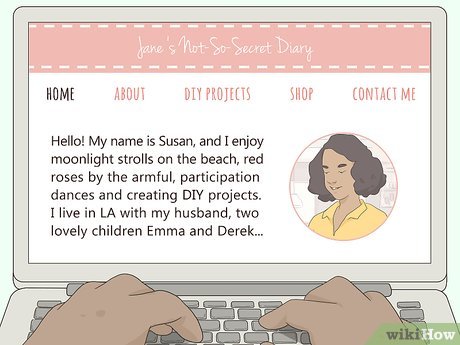
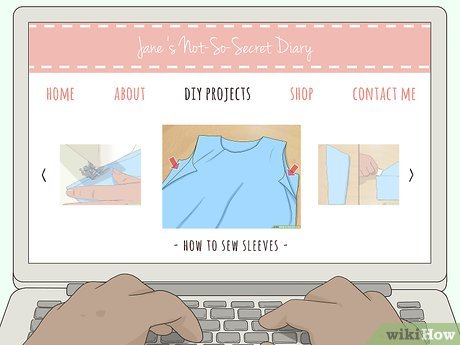
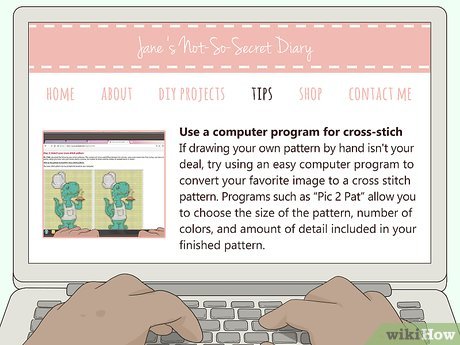
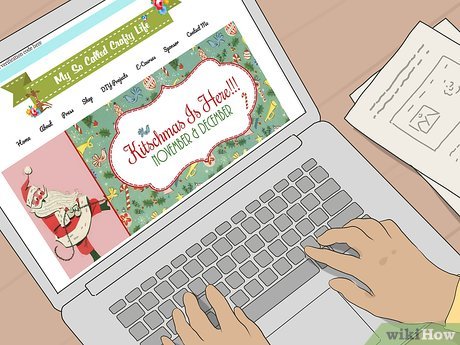
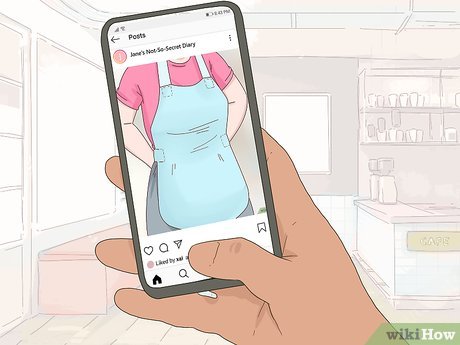
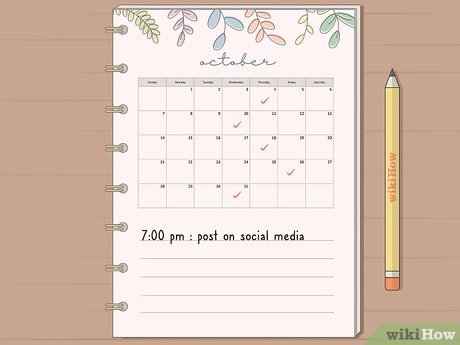

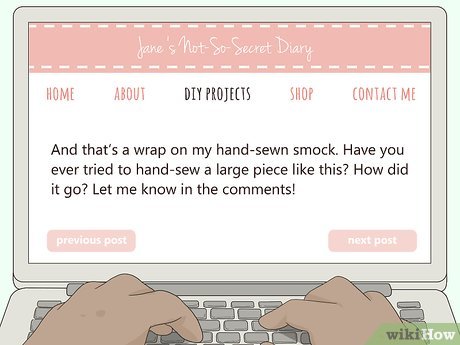






 How to Create a Bilingual Blog
How to Create a Bilingual Blog How to Start a Blog
How to Start a Blog Write Blog with Microsoft Word 2013
Write Blog with Microsoft Word 2013 How to Choose Your Blog Name
How to Choose Your Blog Name How to Create a Personal Blog
How to Create a Personal Blog All handicaps about the blog's development history
All handicaps about the blog's development history